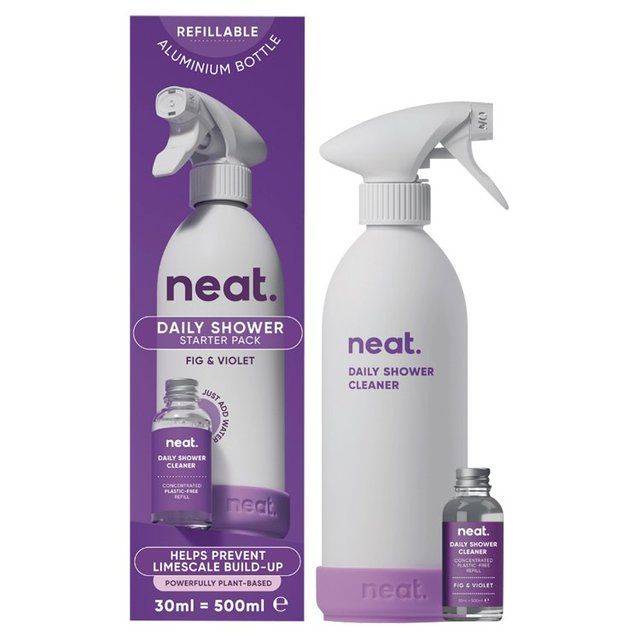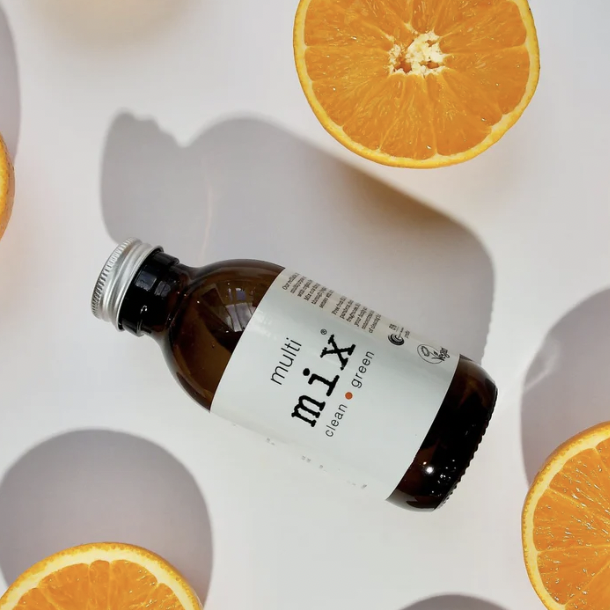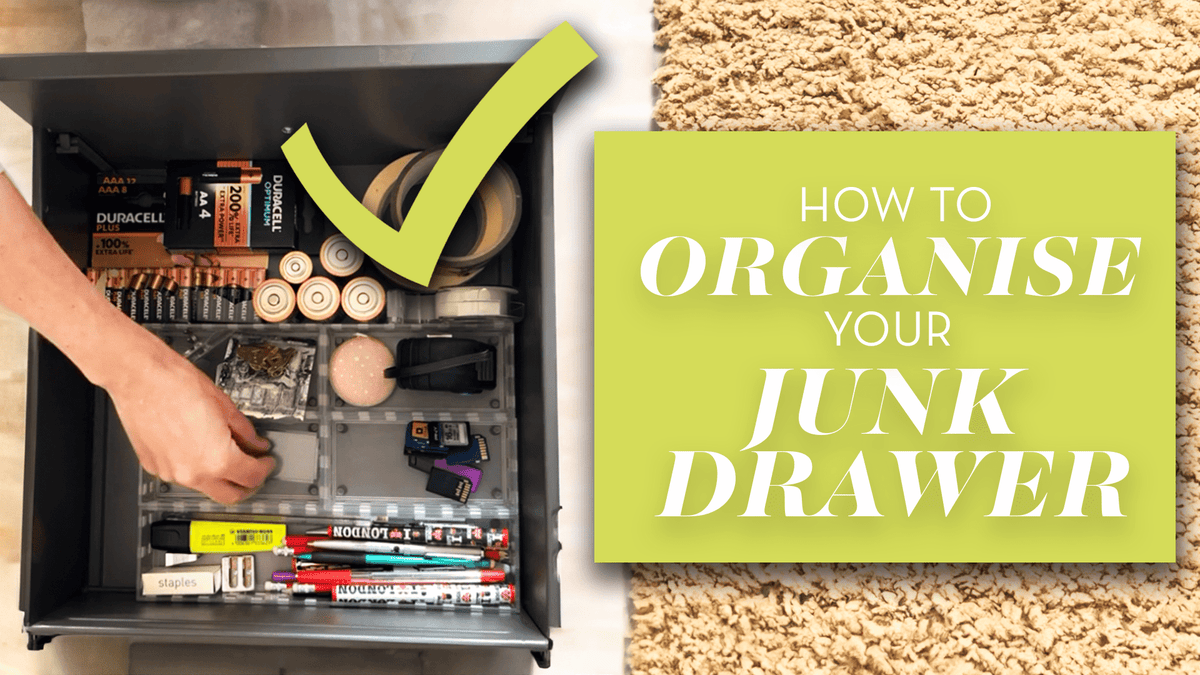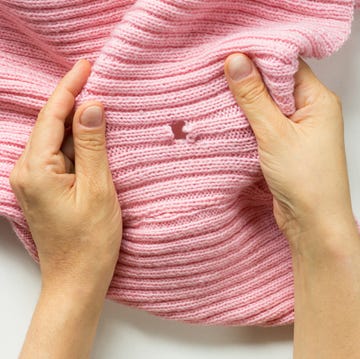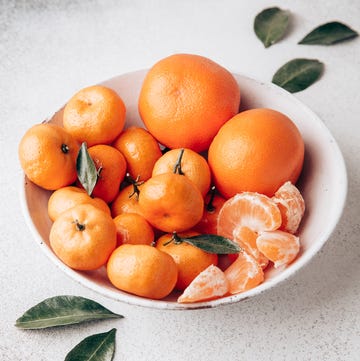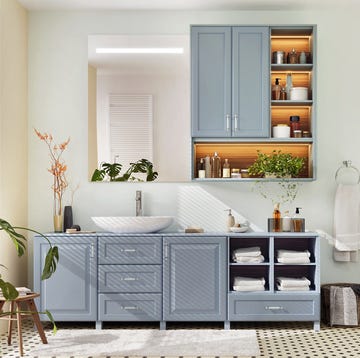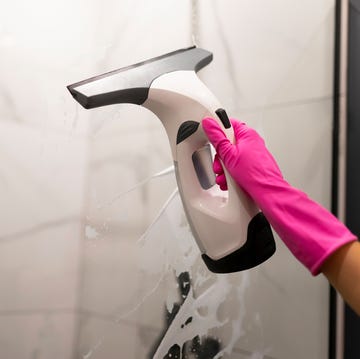Love Good Housekeeping and want more of our Triple-Tested recipes, home tips, fashion inspiration, essential consumer advice and so much more delivered to your inbox? Sign up to our FREE weekly newsletters, sit back and enjoy!
The bathroom is arguably one of the hardest rooms to keep clean. The combination of a wet, humid environment, sometimes limited ventilation, soap residue and busy everyday use can lead to mould, limescale and unwanted smells. Even if you routinely scrub stains away, some areas are easily missed and may never get the clean they deserve.
We’ve listed six spots you may be missing below, along with the best ways to tackle them, so you can give your bathroom a deep clean like never before.
1. Shower door seal strip
This is the plastic strip at the bottom of your shower screen. It keeps water from running out of your shower, but it can soon gather bacteria and discolour, turning black and orange. It’s not a pretty sight, but it doesn’t have to be a permanent fixture in your bathroom.
Start by removing your seal by either sliding it off or pulling it down and peeling it away. If it's fitted with self-adhesive tape, bear in mind that you will need to install a fresh seal, so there's no point in cleaning these types.
According to Shower Seal UK, distilled white vinegar or diluted bleach are two popular solutions to clean shower seal strips. But only use these separately and never combine them, or it creates a lethal chlorine gas.
Alternatively, apply a mould remover spray suited to the material – such as Astonish Mould and Mildew Blaster – following the instructions on pack. Always test on an inconspicuous area first as such products can be unsuitable for use on some rubbers. Leave for as long as recommended and then rinse away. While wearing gloves, use an old toothbrush or an electric cleaning brush to access the crevices and scrub any remaining residue away. Make sure the shower door is clear of residue before refitting once dry.
Shower Seal UK adds that these are very difficult to clean to a like new condition once they've discoloured, so you're better off cleaning it regularly from new to keep it looking pristine and replace as needed. Alternatively, you could purchase a seal with a chrome finish to prevent discolouration.
2. Under the sink
We clean our sinks regularly, but when was the last time you stopped and looked beneath? When water, soap and toothpaste splash over the outside of your sink and dry beneath, they can encourage bacterial growth. If not addressed, you’ll be left with discolouration on the underside; in the worst-case scenario, it can look similar to mini stalactites!
Remove any stubborn stains with a foam bathroom cleaner, such as Domestos Power Foam. Spray it directly onto your microfibre cloth rather than onto the sink so it doesn’t drip down and make a mess. Scrubbing with an electric brush can make the task a little easier too.
Try to get into the habit of cleaning under your sink while you wipe over its surface to keep bacterial growth to a minimum in the future.
3. Under the toilet seat fittings
We pay lots of attention to the toilet when we clean the bathroom. But have you ever tried to clean the area beneath the fittings at the back? It’s usually fairly inaccessible and removing the toilet seat feels like a lot of work, so you probably just do what you can. But, this area can be splashed with residual urine, so it's worth giving it some attention as part of a deep clean, particularly if there are lingering smells you can't seem to get rid of.
Most modern toilet seats are easy to remove; simply lift the lid and seat, press (and maybe hold) the two quick-release buttons facing outwards underneath, and remove. Not all are that simple of course. Older models may be more involved, requiring tools and effort to release the lid and seat. It’s worth learning how to do this, so you can access this hidden space when needed.
Once the seat and lid are free, give this space the once over it needs with your usual bathroom cleaner before replacing. An old toothbrush can help you scrub around the fittings.
4. Toilet brush holder
We have to mention the toilet brush because so few of us actually take the time to clean it; it’s more likely to be replaced than cleaned, but it's important to break this habit!
Try to fill the toilet brush holder with hot, soapy water at least weekly. Sit the brush in it and swirl it around, then tip it down the toilet. Rinse the brush and holder with fresh water, then repeat with cold water and a few drops of bleach.
Give it 10 minutes to soak before pouring it down the toilet again. Flush fresh water over the brush and holder, then finish by spraying everything with disinfectant. Let the brush dry before putting it back in the holder. Make sure you do this in between uses too, so water doesn't build up.
5. Shower head
If it feels like your shower head is spraying water at every angle, that’s a sign it needs descaling. You may also notice white or orange limescale blocking the nozzles. There is a quick solution for this.
Simply remove the shower head and place it in a plastic bag filled with 200ml distilled white vinegar and 200ml water (enough to submerge the nozzles of the shower head). Leave to work overnight and then scrub with warm, soapy water in the morning for sparkling results. If your shower head is fixed, tie the bag over it instead. Do this monthly to keep your shower free flowing.
6. Overflow hole
We often forget about the overflow hole when cleaning our sinks. If you’re not sure what this is, it’s the little hole on the back of the sink that prevents water from overflowing. It introduces air into the system so it can drain more quickly too. Over time, bacteria can build up around the hole, leaving stains, much like grout. And if residue find its way inside, blockages can form too.
Give your overflow hole a clean with an electric cleaning brush or an old toothbrush and some bathroom cleaner, working your way around the outer edge. If it’s started to smell, use a funnel to filter in one cup of bicarb, followed by one cup of distilled white vinegar (prepare for it to fizz), wait for five minutes, then flush it through with hot water.
For blockages, use a drain snake designed to fit overflow holes, such as VIKSAUN 2 Pieces Sink Drain Cleaning Brush, or a long zip tie could work as well.





